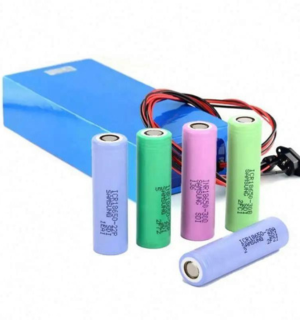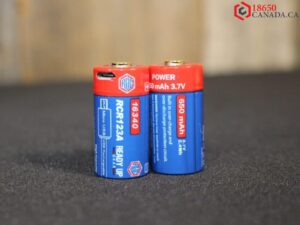Preserving the lifespan of your 18650 batteries is crucial for maximizing their performance and getting the most out of your devices. In this article, we will explore practical tips and strategies to extend the lifespan of your 18650 batteries. By understanding battery lifespan, implementing proper charging practices, optimizing storage conditions, managing discharge rates, considering temperature effects, conducting regular maintenance, avoiding overloading, and practicing responsible recycling, you can ensure your batteries last longer and provide reliable power for your devices.
Understanding the Lifespan of 18650 Batteries:
To effectively extend battery lifespan, it’s important to grasp the typical lifespan of 18650 batteries. These batteries can last for hundreds of charge cycles, but their longevity depends on various factors such as usage patterns and charging habits. The capacity of a 18650 battery gradually decreases over time, leading to reduced runtimes and overall performance. By being aware of the expected lifespan, you can take steps to prolong it and maximize the value of your batteries.
Proper Charging Practices:
One of the key factors in extending battery lifespan is adopting proper charging practices. First and foremost, it is crucial to use chargers that are specifically designed for 18650 batteries. Generic or incompatible chargers can lead to overcharging or undercharging, which can negatively impact battery health. Additionally, avoid leaving batteries on the charger for extended periods once they are fully charged, as this can cause stress on the battery cells. Instead, strive for a balanced charging routine, where you charge the battery when it reaches a certain threshold but remove it from the charger once it’s fully charged.
Battery Storage Guidelines:
Proper storage conditions are essential for preserving the lifespan of 18650 batteries. Extreme temperatures, high humidity, and exposure to moisture can all have detrimental effects on battery performance and longevity. Aim to store your batteries in a cool, dry place away from direct sunlight and sources of heat. Ideally, the storage temperature should be around 20°C (68°F). It’s also important to protect batteries from physical damage during storage. Consider using protective cases or sleeves to prevent accidental short circuits or impact.

Managing Discharge Rates:
High discharge rates can significantly impact battery lifespan. It’s important to avoid discharging your 18650 batteries at excessively high rates, as it puts stress on the battery cells and can reduce their overall capacity over time. To manage discharge rates effectively, be mindful of the power requirements of your devices and select batteries that can handle the demands without straining the cells. By using batteries within their recommended discharge rates, you can prolong their lifespan and maintain optimal performance.
Temperature Management:
Extreme temperatures can significantly affect battery performance and lifespan. High temperatures accelerate the degradation of battery cells, while extremely low temperatures can lead to decreased capacity and poor performance. Avoid exposing your batteries to excessive heat or cold for prolonged periods. For example, leaving your flashlight or other devices with 18650 batteries inside a hot car can cause significant damage. If you’re using devices in extreme weather conditions, consider insulating them or using battery wraps to provide some level of thermal protection. Monitoring battery temperature during usage is also essential to prevent overheating. If you notice a significant increase in battery temperature during use, it’s a good idea to give it a break and allow it to cool down.
Regular Maintenance and Inspections:
Regular maintenance plays a vital role in extending battery lifespan. Over time, dirt, dust, and oxidation can accumulate on battery contacts and terminals, leading to poor conductivity and reduced performance. It’s important to clean these surfaces periodically to ensure proper connections and efficient power transfer. Use a clean cloth or cotton swab dipped in isopropyl alcohol to gently wipe the battery contacts and terminals. Be cautious not to use excessive force or apply liquids directly to the battery. Regular inspections are also essential to identify any signs of physical damage or deterioration. Check for bulging or swelling batteries, corrosion on the terminals, or any other abnormalities. If you notice any issues, it’s best to replace the battery promptly to prevent further damage or potential safety hazards.
Avoiding Overloading and Overuse:
Understanding the limitations of 18650 batteries is crucial to prevent overloading or placing excessive strain on them. Each battery has a maximum discharge rating, which indicates the amount of current it can safely deliver. It’s important to match the battery’s discharge rating with the power requirements of your devices. Using batteries that cannot handle the demand can lead to reduced lifespan and potential safety risks. Additionally, avoid overusing your batteries by giving them regular breaks and allowing them to cool down between extended usage periods. This helps prevent excessive heat buildup and extends their overall lifespan.
Battery Recycling and Disposal:
Responsible recycling and disposal of 18650 batteries are essential for environmental sustainability and safety. When your batteries reach the end of their life cycle or become damaged beyond repair, it’s crucial to dispose of them properly. Many communities have battery recycling programs or designated drop-off points where you can safely dispose of your batteries. Research local recycling options and familiarize yourself with the guidelines for battery disposal in your area. By recycling your batteries, you ensure that valuable materials are recovered, and potential environmental harm is minimized.
Final Thoughts
By implementing the tips and strategies discussed in this article, you can effectively extend the lifespan of your 18650 batteries and optimize their performance. Understanding battery lifespan, following proper charging practices, optimizing storage conditions, managing discharge rates, considering temperature effects, conducting regular maintenance, avoiding overloading, and practicing responsible recycling are all key steps to ensure your batteries last longer and provide reliable power for your devices. By taking care of your batteries, you not only save money in the long run but also contribute to environmental sustainability by reducing electronic waste. Remember, a little attention and care go a long way in maximizing the lifespan and performance of your 18650 batteries.

